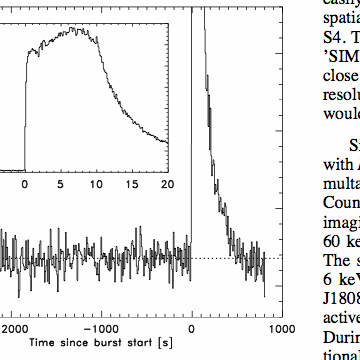Double vision
 Back in November 2011, the 401-Hz millisecond pulsar SAX J1808.4-3658
went into another of it's regular (every ~3 yr) outbursts.
SRON's Jean in 't Zand had a
target-of-opportunity
Chandra program targeting bright PRE bursts
of another source,
and managed to convince the TAC to observe SAX J1808.4-3658 instead.
Back in November 2011, the 401-Hz millisecond pulsar SAX J1808.4-3658
went into another of it's regular (every ~3 yr) outbursts.
SRON's Jean in 't Zand had a
target-of-opportunity
Chandra program targeting bright PRE bursts
of another source,
and managed to convince the TAC to observe SAX J1808.4-3658 instead.
We only detected one burst in the Chandra observation, but it was a beauty — perhaps the brightest ever seen from the source, and it was observed simultaneously by RXTE! Although we found no evidence for discrete spectral features in the burst (the goal of the Chandra observation), the simultaneous observation gave us a unique view on the broad-band X-ray spectrum during the burst. Remarkably, we found evidence that the persistent flux level varies during the burst, increasing by a factor of up to 20 while the burst is active.
This result echoes the findings of my student Hauke Worpel, who found the same effect in a much wider study of several hundred such bursts observed with RXTE (see arxiv:1303.4824). Jean's paper was just accepted by A&A.
Read the paper arXiv:1301.2232
Labels: 2013, /thermonuclear bursts




